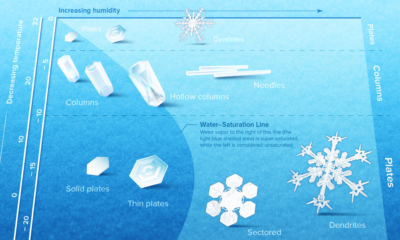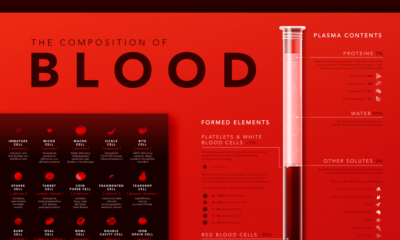The last year may have come and gone quickly, but scientists and researchers have worked painstakingly hard to advance our knowledge within a number of disciplines, industries, and projects around the world. Over the course of 2022, it’s easy to lose track of all the amazing stories in science and technology.
At a Glance: Major Scientific Headlines of 2022
Below we dive a little deeper into some of the most interesting headlines, while providing links in case you want to explore these developments further.
The James Webb Space Telescope Arrives at its Destination
What happened: A new space telescope brings promise of exciting findings and beautiful images from the final frontier. This telescope builds on the legacy of its predecessor, the Hubble Space Telescope, which launched over 30 years ago. Why it matters: The James Webb Space Telescope is our latest state-of-the-art “window” into deep space. With more access to the infrared spectrum, new images, measurements, and observations of outer space will become available. » To learn more, read this article from The Planetary Society, or watch this video from the Wall Street Journal.
Complete: The Human Genome
What happened: Scientists finish sequencing the human genome. Why it matters: A complete human genome allows researchers to better understand the genetic basis of human traits and diseases. New therapies and treatments are likely to arise from this development. » To learn more, watch this video by Two Minute Papers, or read this article from NIH
Monkeypox Breaks Out
What happened: A higher volume of cases of the monkeypox virus was reported in non-endemic countries. Why it matters: Trailing in the shadow of a global pandemic, researchers are keeping a closer eye on how diseases spread. The sudden spike of multinational incidences of monkeypox raises questions about disease evolution and prevention. » To learn more, read this article by the New York Times.
A Perfectly Preserved Woolly Mammoth
What happened: Gold miners unearth a 35,000 year old, well-preserved baby woolly mammoth in the Yukon tundra. Why it matters: The mammoth, named Nun cho ga by the Tr’ondëk Hwëch’in First Nation, is the most complete specimen discovered in North America to date. Each new discovery allows paleontologists to broaden our knowledge of biodiversity and how life changes over time. » To learn more, read this article from Smithsonian Magazine
The Rise of AI Art
What happened: Access to new computer programs, such as DALL-E and Midjourney, give members of the general public the ability to create images from text-prompts. Why it matters: Widespread access to generative AI tools fuels inspiration—and controversy. Concern for artist rights and copyright violations grow as these programs potentially threaten to diminish creative labor. » To learn more, read this article by MyModernMet, or watch this video by Cleo Abram.
Dead Organs Get a Second Chance
What happened: Researchers create a perfusion system that can revitalize organs after cellular death. Using a special mixture of blood and nutrients, organs of a dead pig can be sustained after death—and in some cases, even promote cellular repair. Why it matters: This discovery could potentially lead to a greater shelf-life and supply of organs for transplant. » To learn more, read this article by Scientific American, or this article from the New York Times
DART Delivers A Cosmic Nudge
What happened: NASA crashes a spacecraft into an asteroid just to see how much it would move. Dimorphos, a moonlet orbiting a larger asteroid called Didymos 6.8 million miles (11 million km) from Earth, is struck by the DART (Double Asteroid Redirection Test) spacecraft. NASA estimates that as much as 22 million pounds (10 million kg) was ejected after the impact. Why it matters: Earth is constantly at risk of being struck by stray asteroids. Developing reliable methods of deflecting near-Earth objects could save us from meeting the same fate as the dinosaurs. » To learn more, watch this video by Real Engineering, or read this article from Space.com
Falling Sperm Counts
What happened: A scientific review suggests human sperm counts are decreasing—up to 62% over the past 50 years. Why it matters: A lower sperm count makes it more difficult to conceive naturally. Concerns about global declining male health also arise because sperm count is a marker for overall health. Researchers look to extraneous stressors that may be affecting this trend, such as diet, environment, or other means. » To learn more, check out this article from the Guardian.
Finding Ancient DNA
What happened: Two million-year-old DNA is found in Greenland. Why it matters: DNA is a record of biodiversity. Apart from showing that a desolate Arctic landscape was once teeming with life, ancient DNA gives hints about our advancement to modern life and how biodiversity evolves over time. » To learn more, read this article from National Geographic
Fusing Energy
What happened: The U.S. Department of Energy reports achieving net energy gain for the first time in the development of nuclear fusion. Why it matters: Fusion is often seen as the Holy Grail of safe clean energy, and this latest milestone brings researchers one step closer to harnessing nuclear fusion to power the world. » To learn more, view our infographic on fusion, or read this article from BBC
Science in the New Year
The future of scientific research looks bright. Researchers and scientists are continuing to push the boundaries of what we know and understand about the world around us. For 2023, some disciplines are likely to continue to dominate headlines:
Advancement in space continues with projects like the James Webb Space Telescope and SETI COSMIC’s hunt for life beyond Earth Climate action may become more demanding as recovery and prevention from extreme weather events continue into the new year Generative AI tools such as DALL-e and ChatGPT were opened to public use in 2022, and ignited widespread interest in the potential of artificial intelligence Even amidst the lingering shadow of COVID-19, new therapeutics should advance medicine into new territories
Where science is going remains to be seen, but this past year instills faith that 2023 will be filled with even more progress. on But fast forward to the end of last week, and SVB was shuttered by regulators after a panic-induced bank run. So, how exactly did this happen? We dig in below.
Road to a Bank Run
SVB and its customers generally thrived during the low interest rate era, but as rates rose, SVB found itself more exposed to risk than a typical bank. Even so, at the end of 2022, the bank’s balance sheet showed no cause for alarm.
As well, the bank was viewed positively in a number of places. Most Wall Street analyst ratings were overwhelmingly positive on the bank’s stock, and Forbes had just added the bank to its Financial All-Stars list. Outward signs of trouble emerged on Wednesday, March 8th, when SVB surprised investors with news that the bank needed to raise more than $2 billion to shore up its balance sheet. The reaction from prominent venture capitalists was not positive, with Coatue Management, Union Square Ventures, and Peter Thiel’s Founders Fund moving to limit exposure to the 40-year-old bank. The influence of these firms is believed to have added fuel to the fire, and a bank run ensued. Also influencing decision making was the fact that SVB had the highest percentage of uninsured domestic deposits of all big banks. These totaled nearly $152 billion, or about 97% of all deposits. By the end of the day, customers had tried to withdraw $42 billion in deposits.
What Triggered the SVB Collapse?
While the collapse of SVB took place over the course of 44 hours, its roots trace back to the early pandemic years. In 2021, U.S. venture capital-backed companies raised a record $330 billion—double the amount seen in 2020. At the time, interest rates were at rock-bottom levels to help buoy the economy. Matt Levine sums up the situation well: “When interest rates are low everywhere, a dollar in 20 years is about as good as a dollar today, so a startup whose business model is “we will lose money for a decade building artificial intelligence, and then rake in lots of money in the far future” sounds pretty good. When interest rates are higher, a dollar today is better than a dollar tomorrow, so investors want cash flows. When interest rates were low for a long time, and suddenly become high, all the money that was rushing to your customers is suddenly cut off.” Source: Pitchbook Why is this important? During this time, SVB received billions of dollars from these venture-backed clients. In one year alone, their deposits increased 100%. They took these funds and invested them in longer-term bonds. As a result, this created a dangerous trap as the company expected rates would remain low. During this time, SVB invested in bonds at the top of the market. As interest rates rose higher and bond prices declined, SVB started taking major losses on their long-term bond holdings.
Losses Fueling a Liquidity Crunch
When SVB reported its fourth quarter results in early 2023, Moody’s Investor Service, a credit rating agency took notice. In early March, it said that SVB was at high risk for a downgrade due to its significant unrealized losses. In response, SVB looked to sell $2 billion of its investments at a loss to help boost liquidity for its struggling balance sheet. Soon, more hedge funds and venture investors realized SVB could be on thin ice. Depositors withdrew funds in droves, spurring a liquidity squeeze and prompting California regulators and the FDIC to step in and shut down the bank.
What Happens Now?
While much of SVB’s activity was focused on the tech sector, the bank’s shocking collapse has rattled a financial sector that is already on edge.
The four biggest U.S. banks lost a combined $52 billion the day before the SVB collapse. On Friday, other banking stocks saw double-digit drops, including Signature Bank (-23%), First Republic (-15%), and Silvergate Capital (-11%).
Source: Morningstar Direct. *Represents March 9 data, trading halted on March 10.
When the dust settles, it’s hard to predict the ripple effects that will emerge from this dramatic event. For investors, the Secretary of the Treasury Janet Yellen announced confidence in the banking system remaining resilient, noting that regulators have the proper tools in response to the issue.
But others have seen trouble brewing as far back as 2020 (or earlier) when commercial banking assets were skyrocketing and banks were buying bonds when rates were low.













